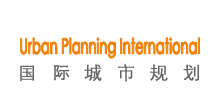|
Abstract: |
The Netherlands is one of the earliest countries to develop and implement green policies, and to integrate spatial planning with environmental planning. Today, integration acts as a key word in Dutch planning policies. It has been proved as an effective policy tool to control urban sprawl and protect ecological environment. Integration literally means the act or process of combining two or more things so that they work together as a system. Planning integration in the Netherlands considers such planning aspects as the coordination of the contents and goals between spatial planning and environmental planning, and the negotiation among different stakeholders such as governments, market and civil society. The experience of Dutch planning integration shows that, first of all, green planning needs to balance the development of economy, society and natural environment, rather than only stressing on environmental protection and confining the growth of the other two perspectives; otherwise, green planning will lose its social and financial support, and then cannot be successful. Secondly, green planning needs to take both goals and processes into account through making feasible action plans guaranteeing the efficiency of planning implementation. This article analyzes the driving force of Dutch planning integration and the administrative framework of multi-sectoral collaboration; it then summarizes the different phases of integration, from the conceptual phase to the applied phase; the different policy tools in practice for integration are illustrated, followed by the explanation of the longterm planning cycle and the municipality association both of which ensure the right direction of planning integration; finally it discusses what China can learn from the Dutch experience. |

